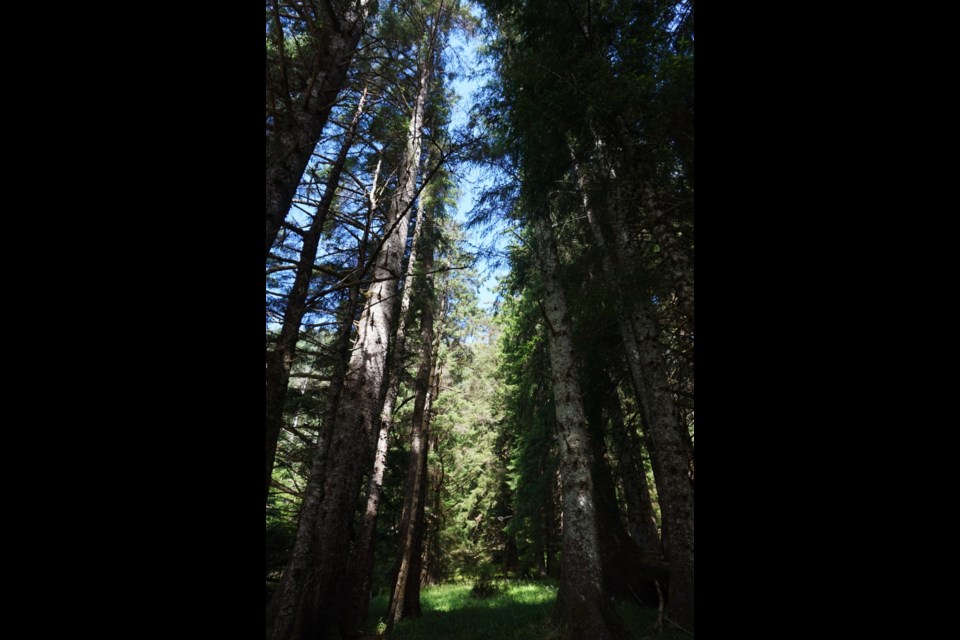When I set off for a five-day trip to the new Ocean House Lodge in Haida Gwaii, I was expecting a luxurious eco-wilderness experience, but I didn’t imagine I would come home having connected so deeply with the local people.
There are fifteen floating resorts in Haida Gwaii, the 10,000 km2 archipelago off of B.C.’s Northern Pacific Coast where Haida have lived for 13,000 years. Only three, including fly-in only Ocean House Lodge which opened in May 2018, are Haida-owned and operated. And while many of the resorts in the network of 150 islands cater to fishermen, Ocean House Lodge, which is owned by the Haida Enterprise Corporation is designed for those seeking a more refined experience. A recent stay there proved to be a celebration of flora, fauna and culture that included walks in lush rainforests, locally sourced fine-dining and rejuvenating spa time. But it was the people who made it so memorable.
After a 10-minute helicopter ride from Sandspit airport over pristine forests and teal-coloured lakes, we touched down in a clearing just steps from Ocean House Lodge’s docks.
Nestled in the calm waters of Stads K’uns GawGa, after an 18-month renovation the former fishing barge has been transformed into a 16,000-square-foot floating all-inclusive luxury resort featuring 12 guest cabins, a theatre, a library, a spa, a lounge and bar area, and a dining room with spectacular ocean views.
The cabins, each accommodating two, are decorated by Haida interior designer Gina Mae Schubert ,who used minimal contemporary décor touches including cedar wood detailing, Haida motifs and historical photography throughout the lodge.
Boat excursions to the network of islands in which Ocean House Lodge is based are a must, and on the first day we donned life jackets and set off for an hour-long boat ride to visit the ancient Haida Village of Kaysun. After we stepped off of the boat onto a secluded beach, 19-year-old cultural interpreter Jayleen led us into the forest, down a clam-shell dotted path to the historical village site where she shared details of the area’s history. Here, Jayleen took a moment to sing a traditional Haida song, leaving us breath-taken by her soulful voice as we stood in the sunlight-flooded forest.
Day two had us again heading onto open water for a two-hour boat trip to the ancient family village of Ts’aahl, where Jayleen led us along moss-covered trails to the site of a centuries-old totem pole, one of the few in the area that is still standing in the location in which it was originally erected. Here, Jayleen continued to impress our group with her immense knowledge of Haida history as she explained how the house frontal poles were made.
Ocean House’s activity coordinator, Rodney, a former nurse who is also of the Haida Nation, was equally knowledgeable and talented in the vocals area, as he proved when he guided us on a walk up an old logging road not far from Ocean House Lodge and stopped in a clearing to sing a Haida rowing song in his deep treble.
One of the most memorable activities was the hour-long trip our group took on a traditional Haida canoe. The wooden boat, painted with vibrant Haida motifs, didn’t feel as stable as the modern versions we were used to, after a few minutes of paddling to the rhythm of Rodney and Jayleen’s voices, we felt quite comfortable moving our canoe through the emerald-green waters of Peel Inlet.
Post-canoe we celebrated our newfound skills on the lodge’s second-floor patio, while taking in the beauty of the bronze and gold seaweed-scape filtering into the emerald green waters of Peel inlet. During this time some guests indulged in a massage using locally sourced essential oils or a sauna in the adjoining spa.
Along with these activities, I was grateful for the opportunities for solitude that Ocean House Lodge provided. One of the most spectacular things about Haida Gwaii is its pristine, relatively untouched and unpopulated (there are only about 5,000 people living on the network of islands), natural setting. Coming from the city, it was soul-soothing to be in a place where for five days our group didn’t encounter another human (although we did see a few deer, racoons, starfish, sea urchins and many jellyfish!) I wasn’t the only guest who relished morning meditation on the lodge’s patio and solo kayaking in the mirror-like waters of Peel Inlet just as the area’s wildlife was awakening to the day.
Making our stay at Ocean House Lodge even more special was the young Haida artist in residence, David Jones. Throughout our stay, Jones, who has recently begun focussing on his jewellery-making practice, worked in a studio overlooking Peel Inlet and was happy to chat with anyone who wanted to ask him about his work. He told me about his career aspirations while I admired his pieces: a silver cuff bracelet, a pair of earrings and a ring that one of the guests had already purchased as a memento from the trip. Jones would be heading out on the same helicopter as our group, but a new artist in residence would replace him the following week.
These colloquial connections, combined with Haida Gwaii’s spectacular beauty and rich history made the stay at the lodge incredibly memorable—and highly recommended.



